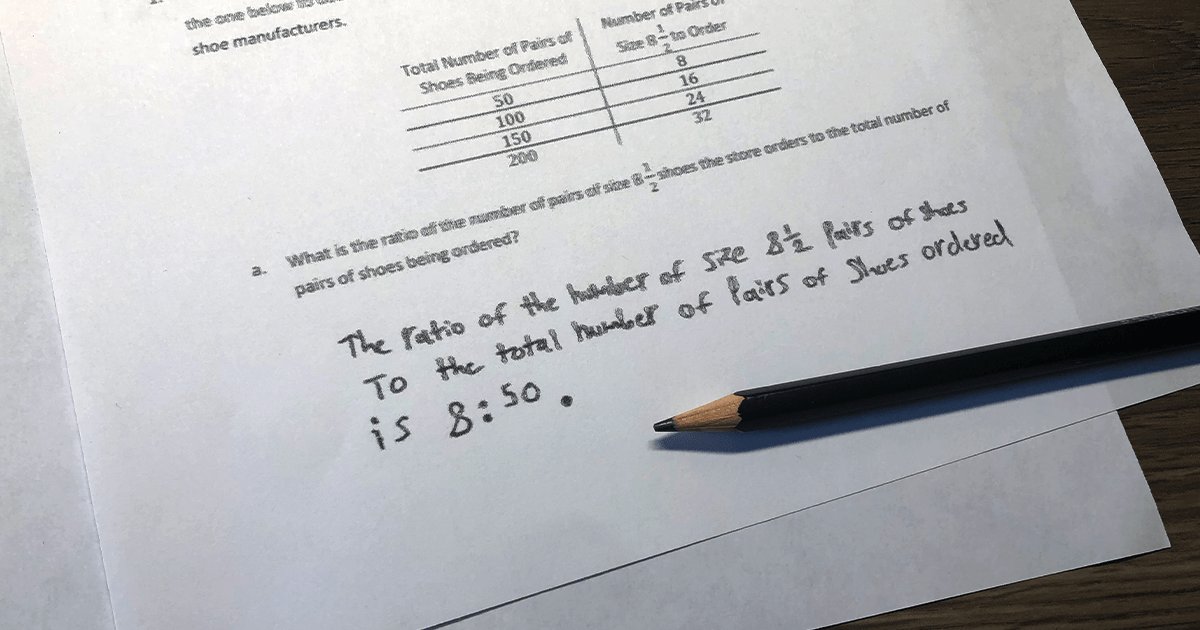Posted in: Aha! Blog > Eureka Math Blog > Assessments > Standards-based Grading: Reaching Beyond Right or Wrong
Teachers often ask for help with assigning grades in Eureka Math. This is understandable: We math teachers share a love for numbers and a desire to see the measurable results of our teaching. But assigning grades is often easier said than done. Mathematics standards focus on concepts and skills that are often layered throughout topics, modules, and even grade levels—students will master them over time, not conveniently at the end of a week or a marking period. Nonetheless, many educators are required to submit weekly grades, so here are some suggestions for determining standards-based grades with the help of the Eureka Math curriculum.
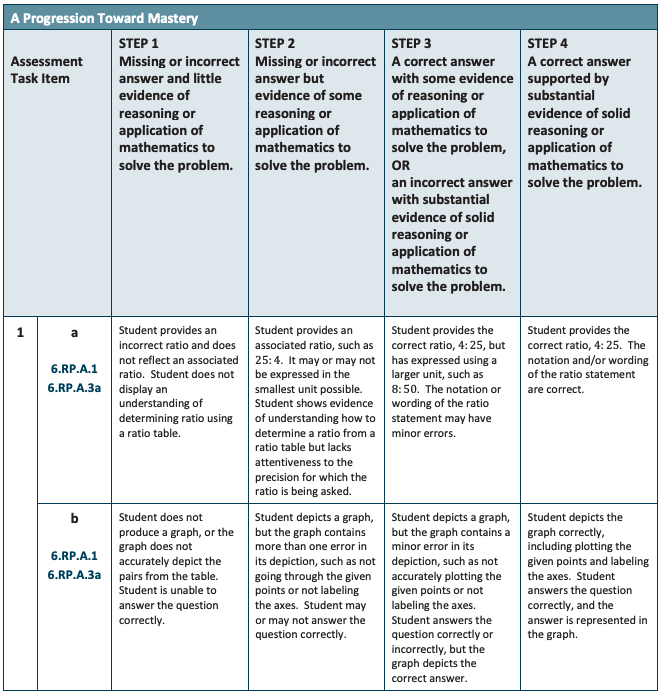
Are my students on target?
As any educator knows, it takes time for learners to develop procedural skill, the ability to problem solve, and a full understanding of concepts. So to generate periodic grades, teachers must determine whether students are progressing satisfactorily on their journey toward proficiency rather than assess them after a standard is taught to mastery. Eureka Math provides helpful rubrics with Mid- and End-of-Module Assessments that explain the progression toward mastery and assess achievement on a 1–4 scale. Each step on the scale describes the qualities expected of student work at that level.
Although I don’t recommend using the mastery rubric directly as a scoring rubric, it can help teachers determine grades when they need to. When I use the Progression Toward Mastery rubric to help me derive a grade, I consider the achievement stages described in the steps on the scale and adjust my expectations to match the level of experience I know students have with the standard. Let’s take a closer look at two work samples from Grade 6.
Grade 6 Module 1 Mid-Module Assessment Problem:

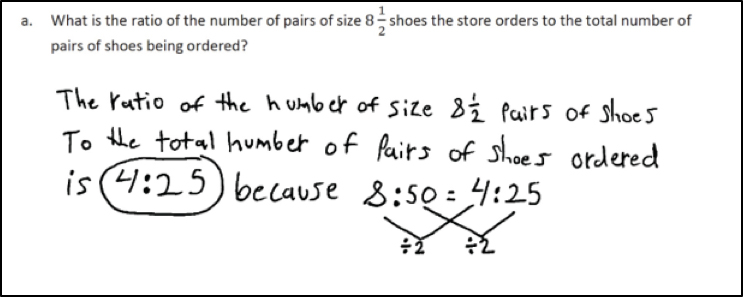
The first response is correct. The student provides a ratio from the table that shows thepart–whole relationship between size 8½ shoes and the total number of shoes ordered. But the first response uses a larger unit for the ratio than the second response. In the second response, the student provides the correct ratio in the smallest unit, which may demonstrate a more advanced understanding of equivalent ratios.
So which student answer meets expectations? It’s up to the teacher to define what student work should look like at this point. The expectation may vary from problem to problem, but I generally find it practical to consider step 3 the target and step 4 as extra credit, indicating that the student exceeds expectations. According to the curriculum rubric and my own knowledge of what I have taught, the first response would receive a 3 and the second would receive a 4. Your interpretation may vary.

Since I base my grading on where students are on the mastery spectrum, I am aware of which skills we have only recently learned and which skills we will expand on after the assessment. For example, at the time of the Mid-Module Assessment (shown in the examples above), students are still forming the skill of manipulating ratios to find unit rate. But that skill should be solid by the time of the End-of-Module Assessment (see Problem 3(c) below). Honoring the idea of a progression toward mastery, by the time of the End-of-Module Assessment, an equivalent ratio like the 8:50 response above no longer meets expectations. After the teaching and learning in this module is finished, such a response (e.g., $36/3 hours in the problem below) would earn a 2 on the End-of-Module Assessment.
Grade 6 Module 1 End-of-Module Assessment Problem 3(c):


I still need more grades. What should I do?
If you are like many educators, you need more grades than what you can get from Mid- and End-of-Module Assessments. I find it helpful to grade assigned Problem Set (Homework) problems as well as topic assessments that I create. I make these topic assessments from unused problems from recent lessons. Once more, it is very important to determine what successful work looks like at a given time as student learning progresses toward mastery. This means creating rubrics ahead of time to identify the goal for the lesson or topic and the quality of work expected for each step. Here is an example I created, patterned after the curriculum’s rubric, to assess student work on a Problem Set from Grade 6 Module 1 Lesson 19.
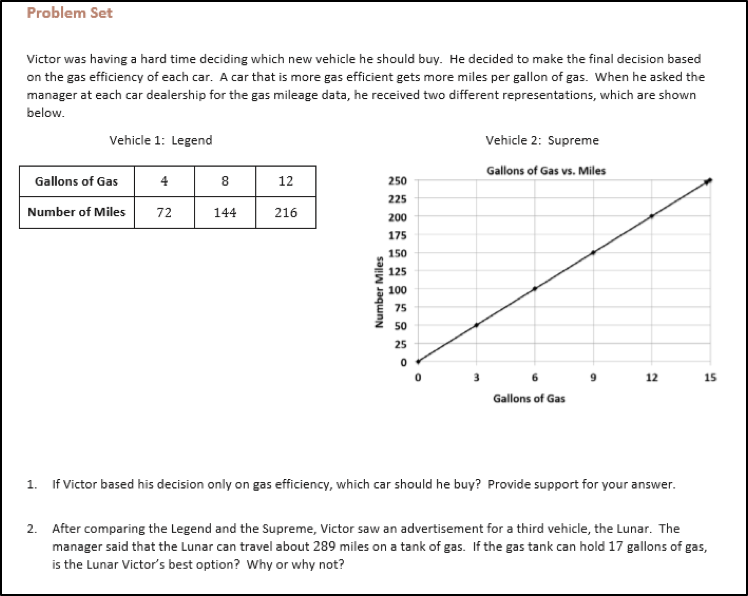
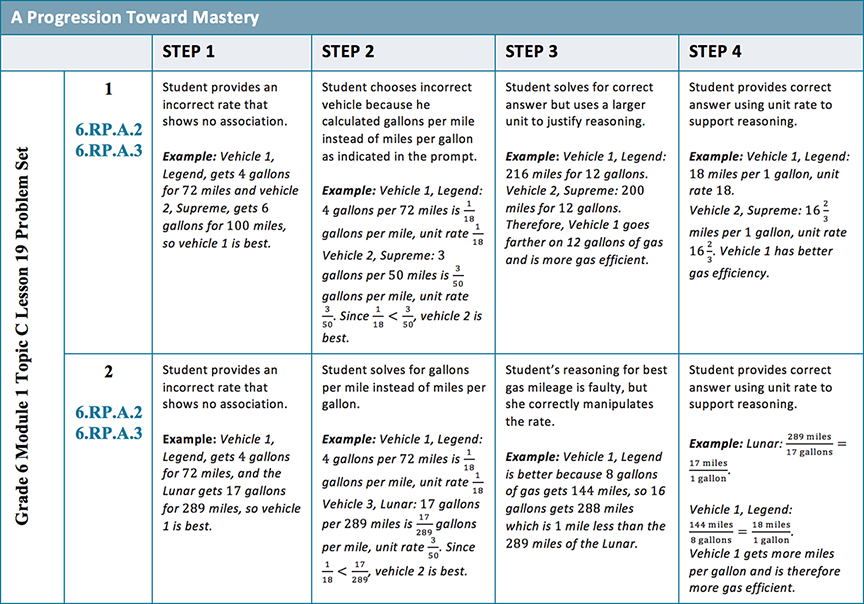
I’d like to see my students meet the target by solving in terms of cost per gallon, or the unit rate, but they only began learning this skill in the previous lesson. The rubric accounts for the fact that student learning is still in the early stages of mastery. In this case, a step 4, usually reserved for exceeding expectations, now indicates meeting expectations because the student uses learning about unit rate just acquired today to correctly answer the question. A step 3 response may be correct but use previous learning of a ratio relationship instead of a unit rate. A step 2 response could include an incorrect answer but show evidence of an attempt to apply concepts about unit rate learned in today’s lesson. When designing your own rubrics, the key is to set realistic expectations considering what you’ve taught most recently.
Using rubrics to assess progress sheds light on what went well and what improvements can be made to teaching and learning. Rubrics also help you provide useful feedback to students, who can respond by addressing their mistakes as learning opportunities instead of failures. You can engage students in a positive environment, where success is not measured simply in terms of right and wrong answers but by the entirety of a student’s understanding with respect to the progression toward mastery.
Nick Homa is a Eureka Math Fellow and an instructional advisor for grades K-8 in Shelby County (TN) Public Schools, which serves Memphis and its suburbs.
Submit the Form to Print

Nick Homa
Topics: Assessments



